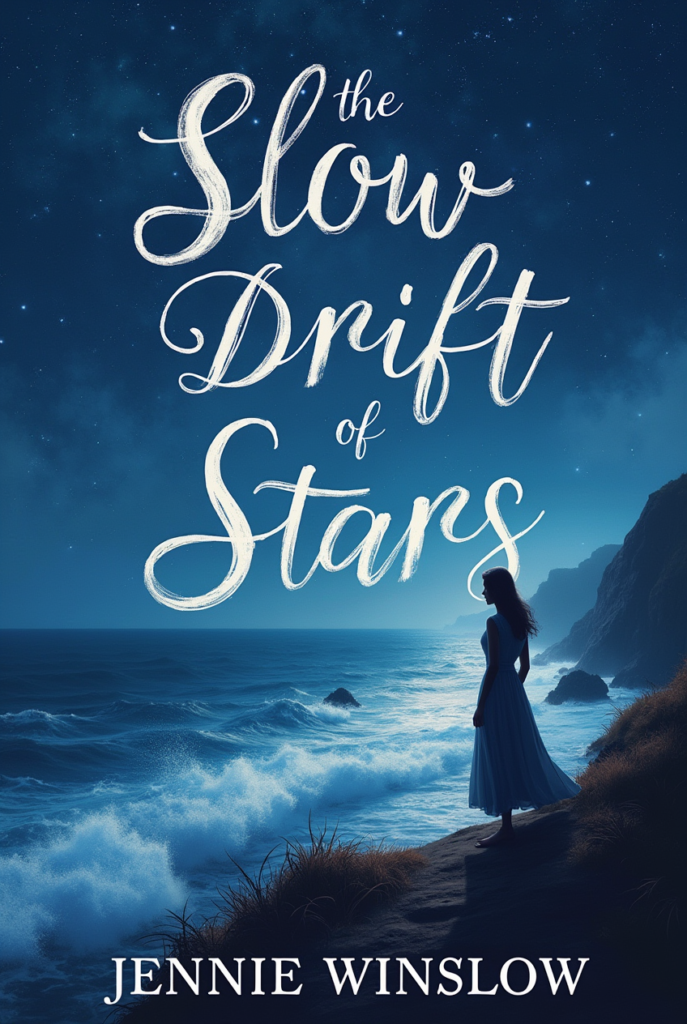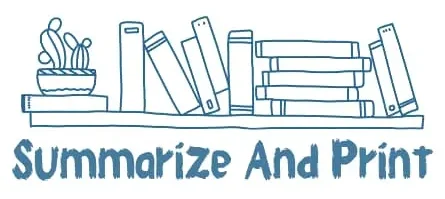The Slow Drift of Stars by Jennie Winslow: A Haunting Tale of Loss, Memory, and Resilience
Introduction: When the Stars Mirror Our Emotions
Have you ever gazed at the night sky, staring at the stars as they drift far away, one after the other, and felt an inexplicable pull inside your heart? It’s as if the vast expanse of space was quietly echoing your own inner turmoil. The Slow Drift of Stars by Jennie Winslow draws on this very sensation, creating a novel that connects with readers on a deeply emotional level.

In this story, you’ll find a beautifully crafted exploration of grief, memory, and the slow, delicate journey toward healing. Winslow’s narrative is more than just a tale about loss—it’s a powerful testament to the resilience of the human spirit, even in the face of overwhelming sorrow.
So, what makes The Slow Drift of Stars such a compelling read? This article will take you through a detailed exploration of the book’s themes, characters, writing style, and what makes it a must-read for anyone who has ever experienced the burden of loss or found comfort in the stars. Whether you’re an avid reader of contemporary fiction or just looking for a book that will touch your soul, this one might be the emotional experience you need.
Table of Contents
Overview of The Slow Drift of Stars by Jennie Winslow
The Slow Drift of Stars by Jennie Winslow is a heartfelt story about navigating the aftermath of tragedy, carrying the heavy burden of grief, and discovering peace in unexpected places. Set in a small coastal town in Maine, the novel follows Margot Avery, a woman whose life begins to unravel after the tragic loss of her child.
Quick Book Summary
- Genre: Contemporary fiction, emotional drama
- Published: [Insert Publication Year]
- Author: Jennie Winslow
- Setting: A quiet coastal town in Maine
- Central Themes: Grief, memory, resilience, healing
- Target Audience: Adults, fans of emotional and literary fiction
Book Summary at a Glance
| Feature | Details |
|---|---|
| Title | The Slow Drift of Stars |
| Author | Jennie Winslow |
| Genre | Contemporary fiction |
| Key Themes | Grief, resilience, memory, family |
| Setting | Maine, USA |
| Target Audience | Adult readers, fans of emotional fiction |
Character Breakdown: The Heart of the Story
The real power of The Slow Drift of Stars comes from its characters. Winslow has created an intimate world where each character’s emotional arc resonates with deep authenticity. As you follow Margot’s journey, you’ll find yourself reflecting on your own relationships, memories, and emotional responses to life’s toughest moments.
Main Characters
- Margot Avery: The heart of the story, Margot is a grieving mother who must come to terms with the loss of her child. Her journey is one of pain, healing, and ultimately, rediscovery. Through Margot’s eyes, you’ll explore the raw reality of grief and the slow, often agonizing process of moving forward.
- Eli Avery: Margot’s husband, Eli, is equally affected by their child’s death. However, he deals with his emotions differently, withdrawing from his wife and family. His struggle highlights the often misunderstood ways that grief manifests, and his evolution throughout the novel is just as compelling as Margot’s.
- Callie: A teenage girl who unexpectedly becomes involved with Margot’s life, Callie represents the possibility of new beginnings. Their relationship, though unconventional, acts as a catalyst for Margot’s healing. It serves as a reminder that help often arrives in the most unexpected ways.
Character Development
The emotional journey of these characters is incredibly well-crafted. Margot’s story, in particular, mirrors the title of the book—The Slow Drift of Stars. She doesn’t “recover” from her grief in a neat, timely manner. Instead, her healing is gradual, almost imperceptible at times, much like the stars slowly drifting across the sky.
As you read, you’ll see how Winslow expertly uses each character’s growth to tell a larger story about the resilience of the human spirit. Margot’s transformation is a subtle, yet powerful reminder that healing isn’t linear and that each person’s journey is uniquely their own.
Central Themes in The Slow Drift of Stars
At its core, The Slow Drift of Stars is about navigating through life’s most difficult experiences and emerging stronger on the other side. Through its powerful themes, Winslow explores what it means to cope with loss, the fragility of memory, and the strength required to move forward.
Grief and Healing
Grief is a shared experience, yet it feels deeply personal to each person. In The Slow Drift of Stars, the novel delves into how grief is both a private and shared experience. Margot’s grief is both specific and universal—it is the pain of losing a child, but also the pain of losing a part of herself.
The slow passage of time is a key element in how the novel portrays healing. You won’t find quick fixes or neatly tied-up endings here. Instead, you’ll see a journey that mirrors your own experiences with time, space, and emotional recovery. The stars drifting across the sky symbolize this gradual process, where healing doesn’t happen all at once but in small, almost imperceptible moments.
Memory and the Past
Memory plays an important role in the novel, especially when it comes to dealing with loss. Margot’s memories of her child serve as both comfort and pain, reminding her of what was lost while also helping her hold on to fragments of love and joy. The novel shows how memories can shape our identities, both for good and bad.
Through Winslow’s beautiful prose, you’ll come to understand that memory is not a fixed entity—it changes over time, like the slow drift of stars across the sky. Some memories fade, while others grow sharper with time. In Margot’s case, this ever-changing nature of memory becomes a crucial part of her healing process.
Resilience and Redemption
Despite the overwhelming sadness that permeates the novel, there is a clear undercurrent of hope. Margot’s ability to find small moments of redemption, whether through her interactions with Callie or her gradual reconnection with Eli, is a testament to human resilience.
Winslow uses symbolism throughout the novel to reinforce the idea that there is always light, even if it’s hard to see at times. Like the stars in the night sky, we all have the potential for resilience, even if it’s difficult to recognize in the darkness.
Writing Style and Narrative Structure
One of the most striking elements of The Slow Drift of Stars is Jennie Winslow’s evocative writing style. She paints pictures with words, drawing you into the world of her characters and their emotional landscapes. Winslow’s prose is poetic and lyrical, adding an additional layer of beauty to the already poignant subject matter.
Prose Style
Winslow’s writing is lush and descriptive, making each scene feel like it’s unfolding in front of you. Her choice of words conveys a deep emotional understanding of the human experience, allowing readers to connect with the story on a visceral level. The tone is gentle, reflective, and somber, creating an atmosphere of introspection that mirrors the novel’s themes.
Structure
The novel doesn’t follow a linear timeline. Instead, Winslow alternates between past and present, weaving together memories, flashbacks, and moments in real-time. This non-linear approach enhances the narrative’s emotional depth, allowing you to experience the characters’ pain and healing from multiple perspectives.
What Readers Are Saying
Common Praise
Readers have widely praised The Slow Drift of Stars for its emotional depth and raw portrayal of grief. Many have expressed how the book made them reflect on their own relationships and experiences with loss. The characters’ complex emotions resonate with readers on a personal level, and the novel’s quiet, meditative pace has been lauded for allowing readers to immerse themselves fully in the story.
Constructive Critiques
While the novel has received glowing reviews, some readers have mentioned the pacing, particularly in the middle chapters. Some felt that the story could have progressed a bit more quickly, especially when it comes to the resolution of certain conflicts. However, for many, this slow pace was a perfect reflection of the book’s themes.
Why The Slow Drift of Stars Matters Today
In today’s world, where loss and trauma are experienced on personal and global levels, The Slow Drift of Stars feels incredibly relevant. The book invites readers to sit with uncomfortable emotions and explore what it means to heal—slowly, imperfectly, but with great hope.
Whether you’re dealing with grief, processing a difficult experience, or simply in search of a beautifully written story, this book offers a comforting space for reflection. It reminds us that healing isn’t always immediate, but that the journey itself is worth taking.
Conclusion: A Story That Lingers Like Starlight
In The Slow Drift of Stars by Jennie Winslow, you’ll find a novel that doesn’t rush to resolve its characters’ pain but allows it to unfold at its own pace. It’s a hauntingly beautiful story of resilience, memory, and the quiet ways that time heals. Whether you’re seeking a story that mirrors your own struggles or simply one that speaks to the deepest parts of your soul, The Slow Drift of Stars will stay with you long after you finish the last page.
FAQ: The Slow Drift of Stars by Jennie Winslow
What is The Slow Drift of Stars about?
The Slow Drift of Stars tells the story of Margot Avery, a mother grieving the loss of her child. Through a series of memories and present-day experiences, she navigates the slow, painful process of healing and finding peace.
Is The Slow Drift of Stars based on a true story?
No, it is a work of fiction, though it explores deeply personal and universal emotions that many readers can relate to.
Who should read The Slow Drift of Stars?
This book is perfect for readers who enjoy literary fiction focused on emotional depth, grief, and healing. It’s also great for anyone looking for a reflective, thought-provoking read.
Where can I buy The Slow Drift of Stars by Jennie Winslow?
You can find the book on major platforms like Amazon, Barnes & Noble, and other online retailers.
If you’re ready for a read that will stay with you, The Slow Drift of Stars might be just what you need. Grab your copy today and begin your own journey into the stars.

